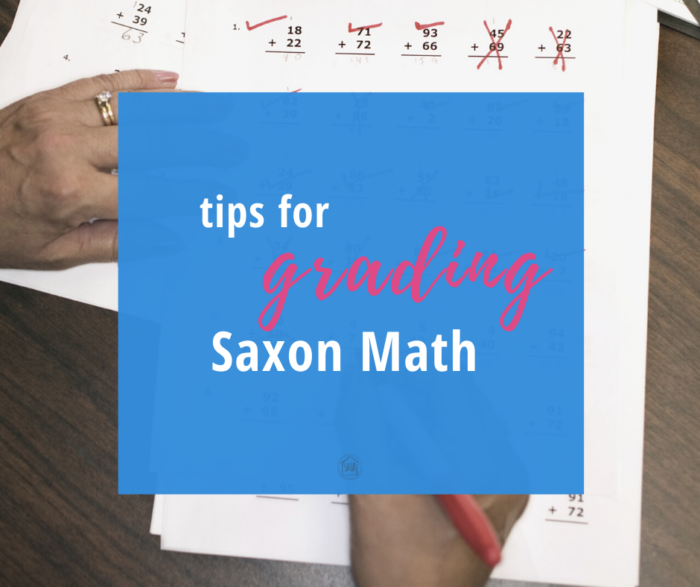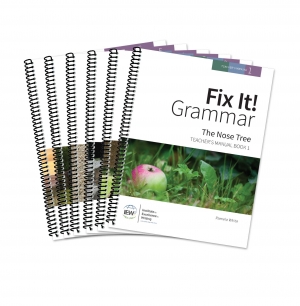
So, I’m grading Saxon Math 6/5 with my oldest daughter the other day – we needed to catch up on grading a bit, so we had a lot to go over. It just so happened my husband was home, hanging by the kitchen island while I read off answers.
I speed through the answers as quickly as I can, but I’ve got standards for reading the answers (the topic of this article, actually). And the entire time all I can think is, “I bet my husband is really impressed with my math reading skills.”
Seriously – that’s how big of a nerd I am! I thought my husband might just love me a little more because he listened to me read fractions, mixed numbers, and decimals with aplomb. Like my abilities in 5th-grade math are my most winning traits – what is this elementary school?
This post may include affiliate links. If you click and make a purchase based on my recommendation, I get a small remuneration at no extra expense to you. I only recommend things I use and believe to be a blessing.
Anyway, all this focus on my read-aloud skills in math reminded me I have been meaning to talk about Saxon Math Grading for a while now. Because just like everything else with Saxon Math, I have thoughts.
My Saxon Math friends know I have abundant thoughts about Saxon Math. We have been using it for 6 years now and have attained Math 7/6 – coming up in the fall! In that time, I have
- figured out what’s really going on in each level of Saxon Math,
- fought overwhelm and general laziness
- created resources to make teaching Saxon Math in the early years a breeze
- learned alongside my students and more.
Now I’m back! Ready to get a little grammar and word nerdy with you, as it relates to Saxon Math.
Let’s talk about Grading Saxon Math in the upper elementary levels and beyond.
A Word About Outsourcing Saxon
First, I do not outsource grading. As you may know, I also don’t outsource the teaching of Saxon Math. I find it of primary importance to know where my students are in math at all times even though the upper-level years of Saxon Math are largely independent.
That is not a put-down for those wonderful resources for parents and students out there. I recently watched a webinar with Nicole the Math Lady and she is lovely and engaging in all the best ways. But I don’t want to lose the connection I have with my kids in math. Also, as good as Nicole the Math Lady is, she cannot see when my kids are just not getting it. And if I were to rely on her teaching my kids, I would feel less equipped when they do come to me with math problems.
Saxon Math is intended to be student interaction with the textbook. It is not intended to be a lecture-then-practice kind of class. In our home, my upper elementary students work for 1 hour each day (4 days a week) on Saxon Math. In that time, they read the lesson for the day, do the warm-up, the lesson practice, and the problem sets for the lesson. Sometimes they can fit 2 lessons in during that hour. In the early lessons of each level, they can do 2-3.
In John Reed’s invaluable book, Using John Saxon’s Math Books, he discusses grading Saxon Math once a week. While we try to fit in grading sessions a bit more frequently – due to my students’ pushing through at a quick pace – I tend to agree that grading needs to be done at least once each week.
P.S. I want to throw in here, that I am not shaming you if you outsource Saxon Math (all or part of it). Those resources are valuable and necessary sometimes. Homeschooling is hard, leave the heavy stuff behind.
What to Grade in Saxon Math
We grade everything in Saxon Math. We also do everything in Saxon Math – every lesson, every math fact practice, every investigation, every test. Some people will give their students tests instead of lessons at the beginning of a level in order to more accurately place them. We don’t do that. In my opinion, this interferes with the fundamental structure of Saxon Math – Incremental Development and Constant Meaningful Review.
My students complete their lessons and check their own math fact practice sheets. Then when it is time for a grading session, I pull out my solutions manual and grade the lessons (and investigations) – giving them the answers aloud. For tests, I have my students read their answers as I check them in the book.
When the grading session is finished, my students take the time to make corrections on any missed problems from their lessons.
Why Grade Saxon Math?
We live in a state where we can be completely independent until high school. As such, my kids have no idea about real “tests” or “grades.” My children have never even discussed letter grading.
One of the joys of homeschooling is knowing exactly where each student is in any given subject without ever having to give a test or focus on evaluation. Our conversations let me know where my students are struggling, where they are excelling, and where they are right on track.
So, you might be wondering why I even grade Saxon Math.
Grading Saxon Math with my kids helps me to see where they are losing focus in math lessons, which students are most likely to make a simple math error, and where my students need a little bit of extra practice.
- As I mentioned before, Saxon Math requires something extraordinary of our students. It requires them to teach themselves from a book. When I grade my students’ math work, I can see where they lost focus in a lesson. I can see which concepts they didn’t quite understand the first (or even the second and third) time around. I have noticed these gaps in understanding often involve a math procedure. A step is missed, consistently. It will show up at the grading session.
- Numbers can be easily transposed. Solutions sometimes are missing a label. Grading Saxon Math regularly with my kids helps me to see which of them are more prone to these errors, so I can encourage them in good math habits.
- Rarely, a grading session will show me one of my students has simply not grasped a concept yet. The same mistake is made across a number of days on the same type of problem. In those cases, my grading session helps to identify the trouble spots. Once the problem is identified, we can do a quick tutorial and some practice problems together. Usually, practice makes better.
How to Grade Saxon Math
Before I tell you how I specifically grade Saxon Math, I need to get out my soapbox for a sec.
Pet Peeve #1: When a cashier (anywhere) says the total like this: “That’s ten with 32.”
That’s NOT how you say that! Not even close.
Pet Peeve #2: When anyone, anywhere reads this number – 104: “one hundred and four.”
That’s NOT how you say that! What you said is actually written 100.4. Well, sorta – because what you said was an incomplete sentence if the number you were actually trying to say was 100.4.
I could go on!
We, as a general culture, have gotten supremely lazy with numbers!!
I’m on a one-woman mission to bring elocution back to the math conversation. And I’m starting at home.
The Math Conversation
A while back I had an epiphany about the early years of Saxon Math instruction. Please excuse me while I quote myself:
In all the levels of early elementary Saxon math, students are learning how to talk about math. My student is able to do the math in her head any day of the week. And she does. But Saxon encourages students to slow down and notice patterns, making observations about the math. Then, it asks the student to find words to tell their teacher what she sees.
Teaching Saxon Math in the Early Years…FAST
It’s really about an introduction into the grand math conversation. And if I know anything about math, it’s that math is precise. The exacting nature of math means we need to be exact in our conversations about math. The precision of language lends clarity to the conversation.
Plus, when my kid decides she wants to major in astronomical physics with a minor in algebraic chemistry (I don’t think either of those things are things), I don’t want her to sound like the equivalent of a country bumpkin at the Queen’s tea. But even if she doesn’t want to major in those things, I don’t want spying on her at her first cashiering job to get on my last nerve.
Grading and the Conversation
Here’s where those mad math reading skills come into play.
When I grade Saxon Math with my students, I make sure to model good math elocution and precision. If the answer is a mixed fraction I read it as a mixed fraction ought to be read. If the answer is a decimal, I make sure I emphasize the “ths” at the end and keep the place value in mind. And I never use the word “and” unless it signifies a decimal point.
All this elocution nerdiness has a purpose though. It turns a grading session into a math conversation in which the student is still learning.
By the way, I believe John Saxon himself would have agreed with me on this whole math conversation topic. There are many instances where the student is required to “write out in words” the number printed in the book. I can only assume it is because he desired his math students to sound math literate.
The Students’ Turn
The tables turn in the math conversation for grading tests. When we grade tests, I have my students read me their answers as I check the Solutions Manual. But I don’t do it this way so they don’t hear the correct answers. I do it so I can check their elocution! Yep, I’m ensuring they won’t go off into the world sounding all math illiterate.
That way they can join the grand math conversation and sound like they deserve a seat at the table. Or they can impress their future mates with their math reading skills.
A Math Teacher’s Pet Peeve Remembered
My Academic Decathlon coach in high school was a math teacher. I never actually sat in his classroom for math, but math was one of the 10 subjects for AD; so he coached us. High school was a time when I didn’t think I was a math person, when I didn’t put a lot of effort into math because I wasn’t good at it. But I do remember the pet peeve my AD coach had regarding the precision of language in the grand math conversation.
He couldn’t stand it when someone said: “plug in” instead of “substitute” in solving algebraic equations. In my mind’s eye, I can still see the veins on his temples raise up to punctuate the point. So don’t say that either.
***














